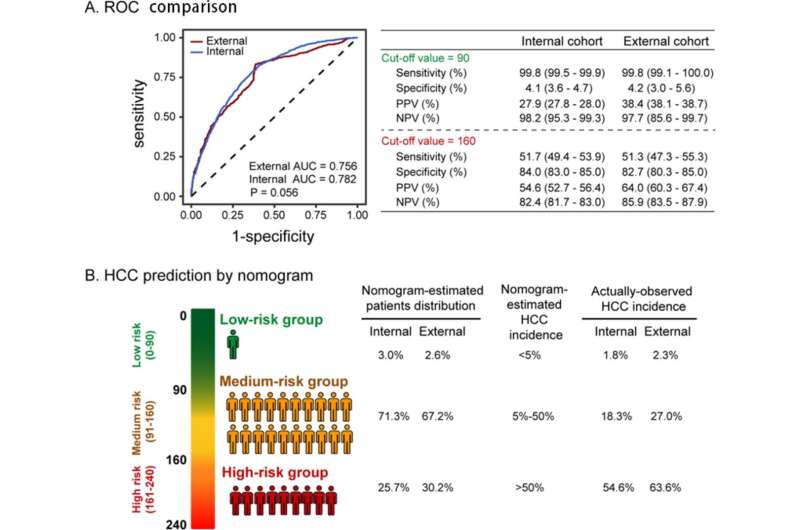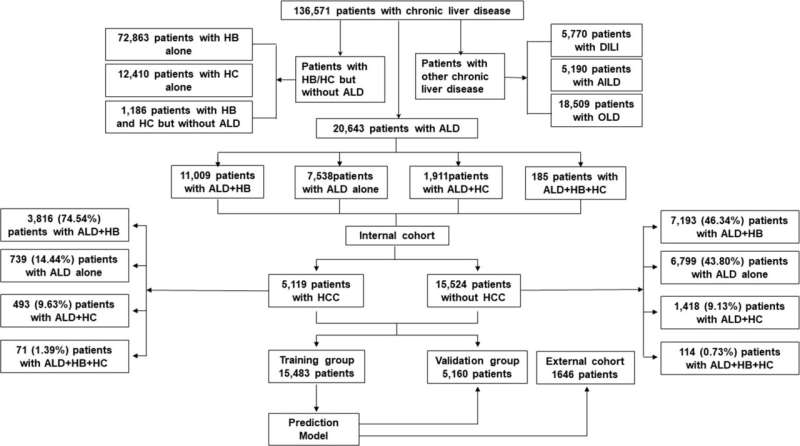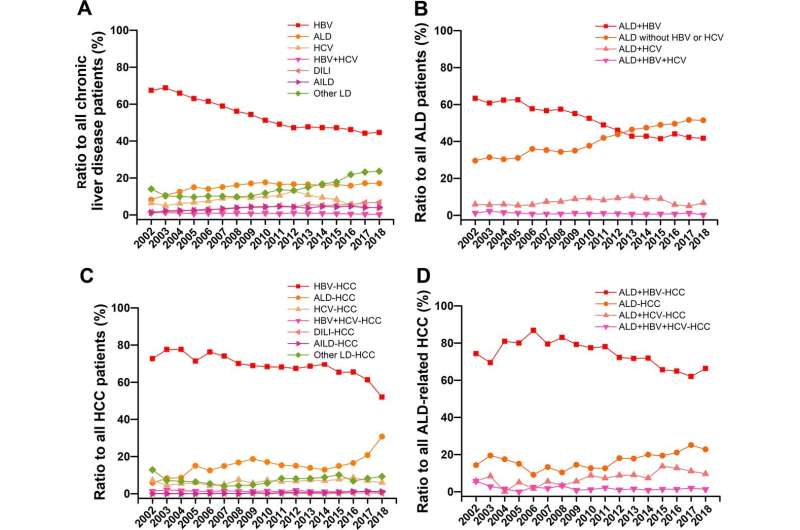This article has been reviewed according to Science X's editorial process and policies. Editors have highlighted the following attributes while ensuring the content's credibility:
fact-checked
proofread
Rising alcohol-related liver cancer prompts new prediction tool

Liver cancer is the sixth most common cancer and the third most frequent cause of cancer-related death globally. However, its distribution and causes vary greatly across different regions. While areas like Eastern Asia and sub-Saharan Africa see the most cases, the reasons behind them differ significantly.
In high-income countries, liver cancer has been on the decline thanks to widespread newborn hepatitis B vaccination and antiviral drugs. Meanwhile, low-income countries witness a worrying rise, often linked to increased hepatitis B and C infections and injectable drug use.
While viral hepatitis remains a major concern, another factor is gaining attention: alcohol consumption. Studies show that chronic alcohol consumption can directly cause about 10% of cancer cases in men and 3%, respectively, in women. In fact, a study at the Mayo Clinic revealed that alcoholic cirrhosis was the main culprit in 29% of patients with hepatocellular carcinoma (HCC), the most common liver cancer type.
But the study doesn't just sound the alarm; it also offers a potential solution. Researchers identified key risk factors for HCC in people with alcohol-related liver disease, including heavy drinking, age, diabetes, male sex, and liver cirrhosis. Based on these factors, they developed a novel tool called a nomogram that can predict HCC risk with high accuracy and ease of use.

This nomogram could be a game-changer for doctors, allowing them to personalize treatment plans and identify individuals at the highest risk for HCC. Early intervention could save lives and prevent unnecessary suffering.
This study underscores the growing public health concern of alcohol-related liver cancer. The newly developed nomogram offers a valuable tool for doctors to identify high-risk individuals and personalize treatment plans, potentially saving lives and preventing unnecessary suffering.
While the study provides valuable insights, it acknowledges limitations like its retrospective nature and the need for further validation in larger, prospective studies. Additionally, incorporating other factors like smoking, genetics, and dietary habits could further improve the prediction model.

The researchers also highlight the need for future research on non-alcoholic fatty liver disease and its link to liver cancer, as this area remains under-investigated.
Overall, this study shines a light on the rising threat of alcohol-related liver cancer and offers a promising tool for early detection and intervention. Further research and public health efforts are crucial to combat this growing health challenge.
The findings are published in the journal eGastroenterology.
More information: Binxia Chang et al, Prevalence and prediction of hepatocellular carcinoma in alcohol-associated liver disease: a retrospective study of 136 571 patients with chronic liver diseases, eGastroenterology (2024). DOI: 10.1136/egastro-2023-100036


















